Make no mistake, virtual reality is back and, with some incredible VR headsets in development, the best is still to come.
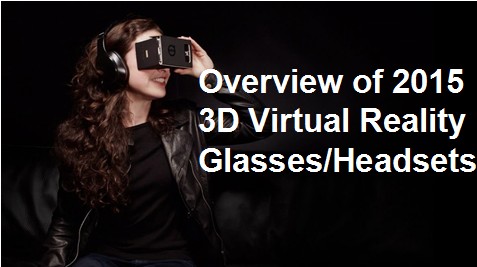
Virtual reality (VR) is an immersive experience in which your head movements are tracked in a three dimensional world, making it suited to games and even movies.
While VR was a non-starter back in the 90s, developers are now creating mind-blowing experiences, which look set to revolutionise gaming. The most incredible thing is that the latest and greatest VR experiences don’t require mind-bending technology.
Yes, the likes of Oculus Rift and Avegent Glyph look fairly futuristic, some of the best experiences out there today just require a Smartphone, a cardboard box and a bit of trial and error. There are tonnes of great Google Cardboard apps and games which anyone can try, for an insight into what this new world of VR has to offer.
But what are the best VR headsets and which one should you choose? We’ve created the definitive list of the 10 most gob-smackingly awesome devices just waiting to be strapped to your bonce.
Note: We are not going to decide which VR glasses you should buy for you in this page. Here is a Video Glasses Comparison, Review & Buyers Guide for your reference.
Now read on for the full list.
1. Sony Project Morpheus – sony.com
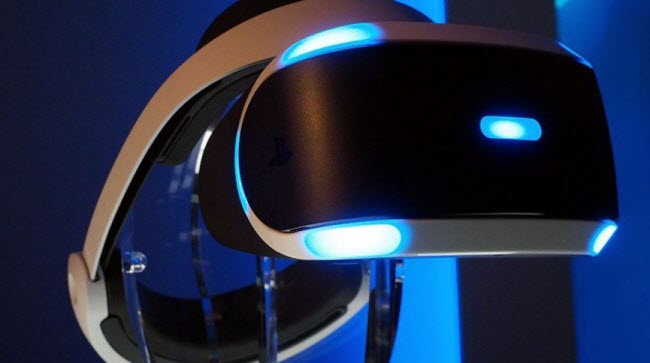
At last we have a launch date for Sony’s Project Morpheus, the PlayStation 4 powered VR headset: the first half of 2016.
A new version was announced at GDC 2015 and gone is the 5-inch LCD display of the original prototype; in its place a 5.7-inch OLED one that will improve motion blur and enable low persistence. The display’s refresh rate has been ramped up to 120hz, making 120fps gaming a real possibility.
The reported latency issues of Morpheus Mk1 have been addressed, with a new 18ms reading, and tracking accuracy has been tweaked with a total of nine LEDs now aiding the positional awareness of the headset.
2. HTC Vive – htcvr.com
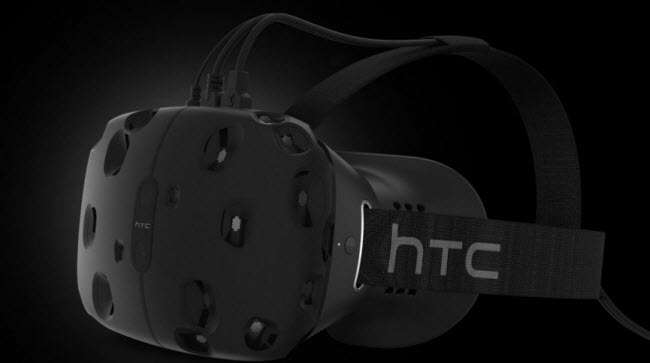
HTC unveiled the HTC Vive, a Steam VR headset made in a collaboration with Valve at MWC 2015 – and it’s due to hit the shops before the end of the year.
The Vive plugs into PCs and work with Valve’s mammoth gaming ecosystem and has a design that’s reminiscent of Oculus Rift’s Crescent Bay edition.
It packs 70 sensors and 360 degree head-tracking and offers a 90Hz refresh rate; the stat that’s key to keeping down latency. Elsewhere, there’s an accompanying “context aware controller”, so you can shoot, move and interact with elements in the virtual world.
3. Samsung Gear VR – samsung.com
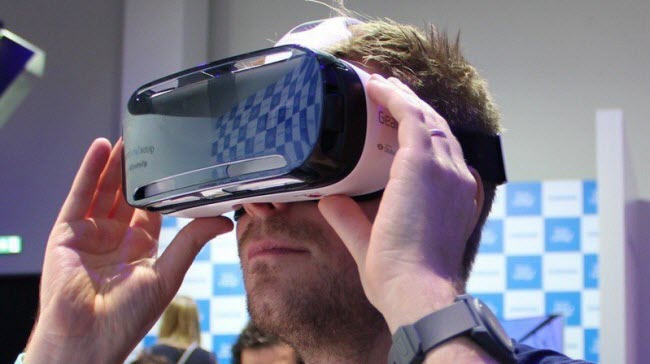
Samsung’s entry into VR has delivered one of the best all-round and consumer friendly headsets on the market, albeit, with a restrictive walled garden that we’re becoming accustomed to with its wearable offerings.
The Gear VR is an Oculus Rift powered device that uses a Samsung Galaxy smartphone (Note 4 or Galaxy S6 depending on the version you choose) as its processor and display. The Galaxy handset simply slots in front of the lenses, into a Micro USB dock, and uses its Super AMOLED display as your screen.
It’s already added a host of games and a whole marketplace of VR video content called Milk VR, which is available in the US. In our Samsung Gear VR review, we said that “Samsung’s first VR headset is an awesome peek into the future of VR for the rest of us and we’re betting on Samsung to make good on its promise to get enough movies, games and VR experiences onto the Gear VR as possible.”
Related articles:
Watch 3D Videos on Gear VR with Galaxy Note 4
Play 3D Blu-ray Movies on Gear VR
Transfer DRM iTunes Movies to Gear VR
4. Oculus Rift – oculusvr.com
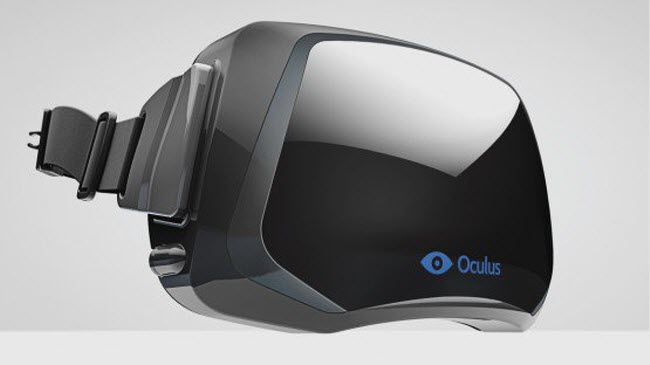
Of course, Oculus Rift is the virtual reality headset that started the current hysteria . Developed by 21-year-old engineer Palmer Luckey, funded via Kickstarter and snapped by by Facebook for a cool $2bn, the Rift plugs into your computer’s DVI and USB ports and tracks your head movements to provide 3D imagery to its stereo screens.
The latest version ” dubbed Crescent Bay ” brings 360 degree perspectives and 1080p visuals to the table, as well as supercharged head tracking, so it can detect infinitesimally small movements.
Make sure you check out or round up of the best games for Oculus Rift.
Related articles:
How to Watch Movies on Oculus Rift
Watch 3D Movies on Oculus Rift
Watch 3D Blu-ray movies on Oculus Rift
5. Microsoft HoloLens – microsoft.com
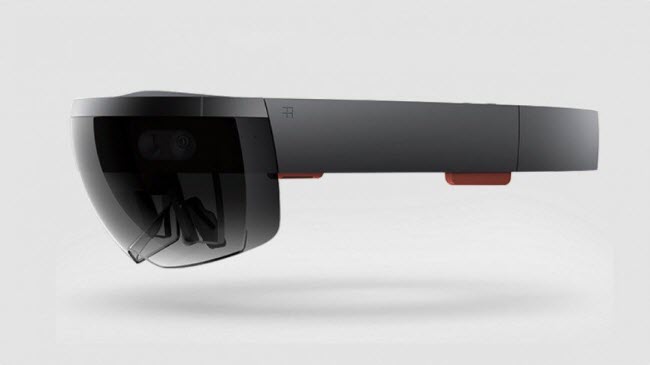
The device that took everyone off guard, Microsoft HoloLens is half virtual and half augmented reality. The device merges real world elements with virtual ‘holographic’ images, meaning you can look at your Minecraft world on your kitchen table, or walk around the surface of Mars in your living room.
Using Kinect-style tech to recognise gestures and voice commands, the headset has a 120 degree field of vision on both axis, and is capable of ‘high definition’ visuals. What’s more, there’s no connection to a PC ” a full Windows 10 system is built into the headset and runs off a battery. Yes, we can’t wait to see how long that lasts either.
There’s no word on a release date, and it’s unlikely to be a reality until 2016.
6. Carl Zeiss VR One – oneteamus.org
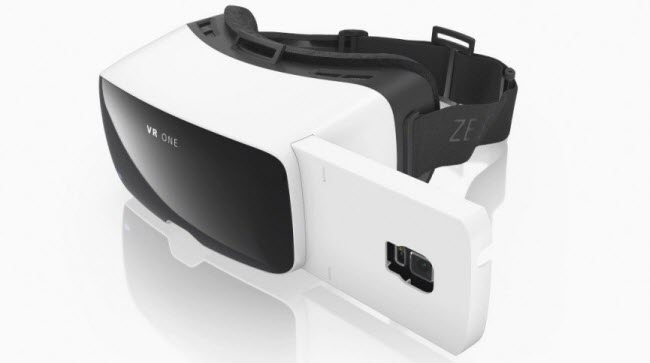
Like the Samsung Gear VR, the hardware power for this Carl Zeiss branded headset comes from your smartphone. Unlike Sammy’s effort, however, you’re not tied to just one mobile with the Zeiss VR One; it will play ball with any iOS or Android handset between 4.7 and 5.2 inches.
It packs a media player for the likes of pictures and YouTube videos and an AR app for augmented experiences, open source Unity3D SDK (iOS and Android) mean there’s plenty of scope for development.
What’s more, with lens mater Carl Zeiss doing the optics, there’s plenty of promise.
Related articles:
Transfer and watch 3D videos on VR One with iPhone 6 and Android Phone
Watch 3D Videos on Gear VR
Play DRM iTunes Movies on VR One
7. Avegant Glyph – avegant.com
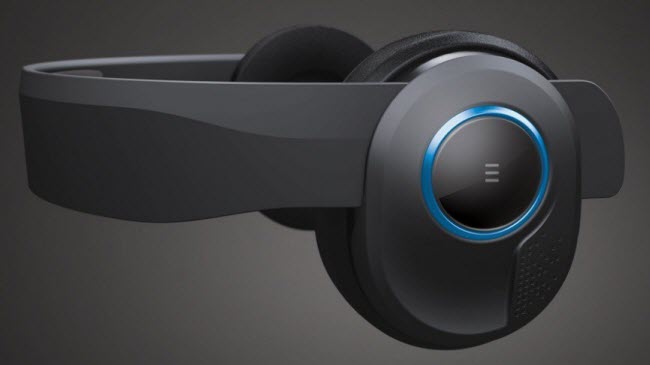
The majority of these headsets are large and heavy, but Avegant’s Glyph is far sleeker and smaller. Its svelte size is due to its display technology: rather than using conventional smartphone-like screens to present imagery, it uses an array of micro mirrors to reflect an image directly into your retina.
It can be worn like a pair of headphones until you pull the screen down over your eyes, where you can enjoy 1,280 x 720 for each eyeball. While it’s limited to a 45 degrees field of view, the micro mirror array is said to reduce motion sickness and eye fatigue.
8. Razer OSVR – razerzone.com
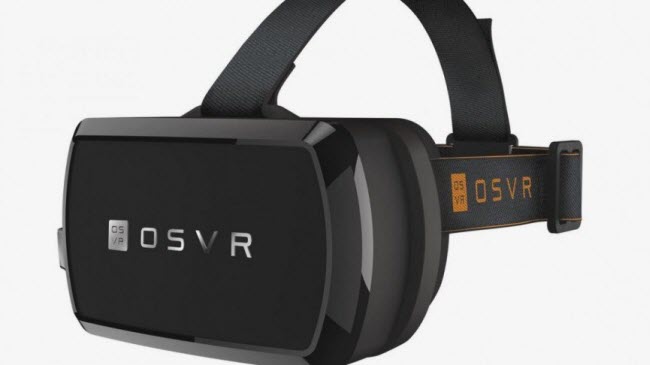
Razer’s OSVR isn’t a rival to the likes of Oculus Rift, Project Morpheus and Samsung Gear VR ” and again, there’s little chance of it making into living rooms any time soon. It’s intended to make life easier for developers to make applications VR hardware ” without technical (software and hardware) limitations getting in their way.
Open source is the big buzz word, breaking down limitations that hinder development even on Oculus Rift. Don’t expect to see a consumer version until 2016 at the earliest.
9. Google Cardboard – dodocase.com
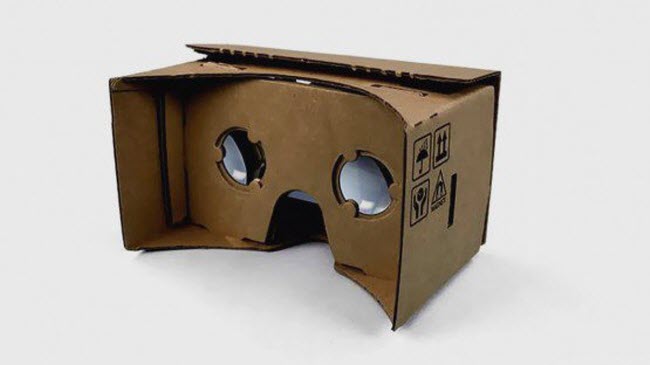
Not to be outdone, Google has announced its Cardboard virtual reality headset. Popping a smartphone into a cardboard container and then strapping it to your head may sound like a joke, but it actually works and it could become a low-cost way to experience virtual reality.
After all, your smartphone contains all the necessary gyroscopic sensors and positioning systems to accurately track your head movements. Related is Durovis’ Dive, which is essentially the same thing made of higher quality and more sweat-resistant materials.
Related articles:
Play Video on Google Cardboard with 3D effect
10. Archos VR Headset – archos.com
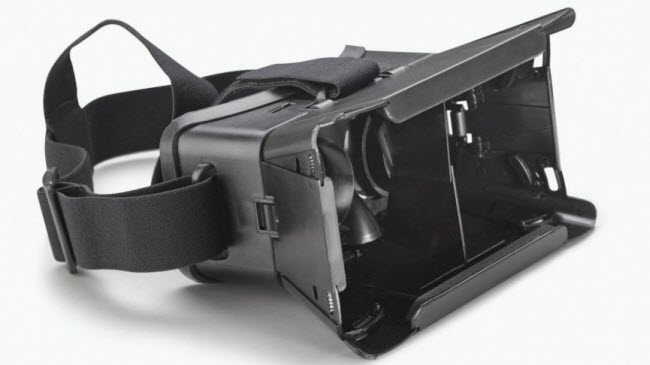
Essentially Google cardboard but, er, not cardboard, Archos’ attempt at bringing mobile VR experiences to the masses is a sub-£25 device that was announced in October.
The Archos VR Headset works with any smartphone with a screen sized 6-inches or less, and the French company claims it will work with iOS, Android and Windows Phone – although you’ll be hard pressed finding any developers knocking out VR apps and demos for Microsoft’s mobile platform.